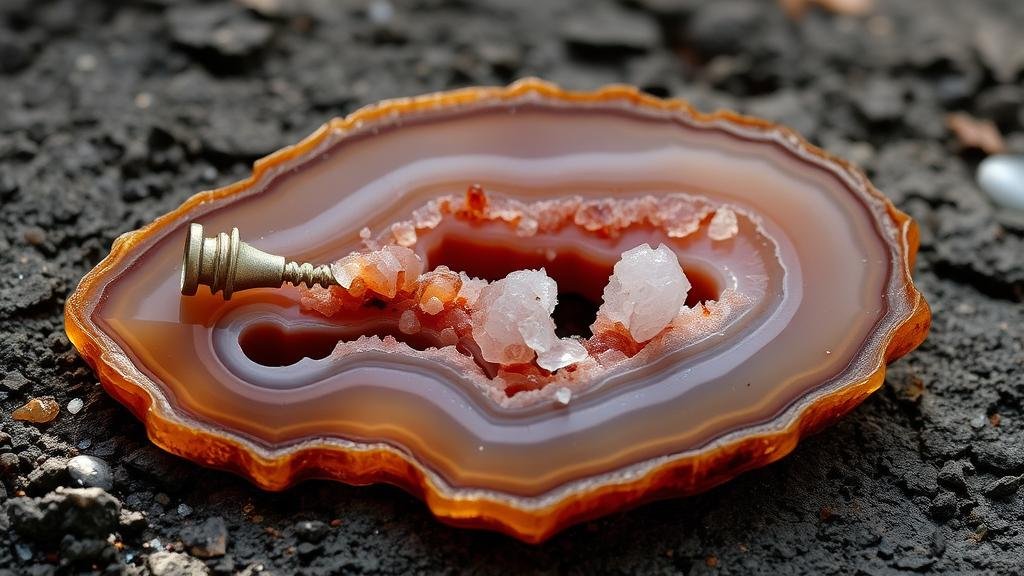Ancient Gems in Volcanic Veins: Discovering Fire Agates and More
Ancient Gems in Volcanic Veins: Discovering Fire Agates and More
For rockhounds and mineral collectors, the allure of volcanic gems is both aesthetic and scientific. Among these treasures, fire agates stand out as one of the most captivating. Their unique coloration and formation process provide insight into the complex geological processes that shape our planet. In this article, well explore the characteristics, formation, and collecting tips for fire agates and other volcanic gems, giving you a comprehensive guide to these geological wonders.
What are Fire Agates?
Fire agates are a form of chalcedony, characterized by their warm, fiery colors that range from deep red to golden yellow and vivid greens. The iridescent effect seen in fire agates is due to the microscopic layers of silica within the stone, which diffract light. They typically form in volcanic environments, where silica-rich fluid fills cavities and fractures in volcanic rock. Over time, these fluids cool and crystallize, resulting in the stunning gemstones that collectors cherish.
The Formation of Fire Agates
The process of fire agate formation is complex and occurs in several stages:
- Volcanic Activity: Fire agates are formed in the aftermath of volcanic eruptions, when silica-rich hydrothermal fluids enter fissures in rocks.
- Cooling and Solidification: As the volcanic gases cool, they precipitate silica, which eventually crystallizes into chalcedony.
- Layering: The colors in fire agates result from layers of iron oxide and other minerals that coexist with silica, creating the vibrant hues that make these gems so appealing.
The average size of a fire agate gem can be anywhere from a few millimeters to several centimeters in diameter, with the most desirable stones displaying a perfect blend of colors and transparency.
Other Volcanic Gems
Besides fire agates, several other gems and minerals can be found in volcanic environments. Some notable examples include:
- Obsidian: A naturally occurring volcanic glass that is formed when lava cools rapidly with minimal crystal growth, often used in tools and jewelry.
- Pumice: A light, porous volcanic rock that can float on water, commonly used as an abrasive in personal care products.
- Perlite: A lightweight volcanic glass that is expanded by heating, commonly used in gardening as a soil amendment.
Where to Find Fire Agates
Fire agates are primarily found in the southwestern United States, particularly in:
- Arizona: The most famous locality for fire agates, with excellent specimens found in the areas around the Sonoran Desert.
- New Mexico: Not as prolific as Arizona but still a notable source of beautiful fire agate specimens.
- California: Certain volcanic fields, particularly those in the Mojave Desert, can yield decent specimens as well.
Collectors should be mindful of land ownership and regulations when exploring these areas, as many locales are on private property or protected lands.
Tips for Collecting Volcanic Gems
Collecting fire agates and other volcanic gems can be rewarding but requires preparation. Here are some practical tips for rockhounds:
- Research: Learn about the geology of the area you are visiting, including maps that show volcanic rock formations and historical mining sites.
- Gear Up: Equip yourself with proper tools such as chisels, hammers, and safety goggles, as well as sturdy footwear ready for rugged terrain.
- Footwork: Look for areas with deltas or alluvial deposits where water has eroded volcanic materials, potentially uncovering hidden gems.
- Cleaning: After collecting, clean your specimens gently with water and a soft brush to avoid damaging their surfaces.
The Significance of Fire Agates in Collecting
Fire agates hold aesthetic, cultural, and financial significance. Many collectors seek these gemstones not just for their beauty but also as a tangible link to Earths volcanic processes. High-quality specimens can fetch prices upwards of $200 per carat, depending on size, color, and iridescence. Also to their monetary value, fire agates are often associated with positive energies and emotional balance, making them a popular choice in holistic practices.
Conclusion
Fire agates and other gems born from volcanic activity present a fascinating blend of beauty and understanding of geological processes. As you embark on your quest to discover these vibrant, ancient gems, remember to research diligently, equip yourself properly, and enjoy the experience of exploring these natural wonders. Collecting volcanic gems not only enriches your collection but also deepens your connection to the Earths dynamic history.


